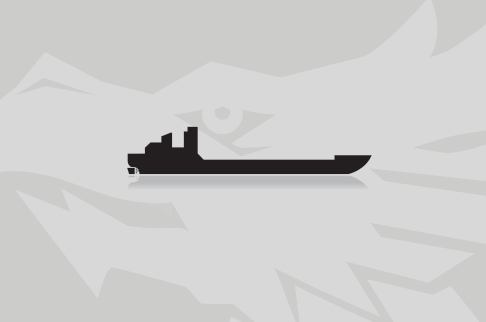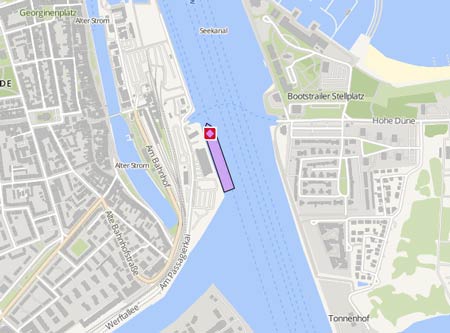GALWAD-Y-MOR
Course/Position
Latest ports
Latest Waypoints
Latest news
Report: Unexploded bomb caused damage and injuries
An MAIB report has revealed an unexploded WWII bomb that detonated on the seabed below the 'Galway Y Mor' was the cause of a deep-sea explosion in Cromer on Dec 15, 2020, which resulted in significant injuries to five of the seven crew as well as major damage to the crab potting vessel. The injured crew were transferred to hospital by helicopter and lifeboat and the vessel has since been successfully salvaged and rebuilt. Following the explosion, the crew of the vessel were able to send a distress message, launch the liferaft and board rescue boats that had been dispatched by a nearby offshore support vessel. The report of the Marine Safety Investigation Branch, identified that unexploded weapons can be highly dangerous, even when underwater for years, and potting gear disturbed the bomb, which resulted in the explosion. The effect of the explosion could have resulted in multiple fatalities, but the vessel's hull was strong enough to withstand the forces generated by a nearby seabed explosion. There was also no records or information available to fishermen that could have alerted the skipper to any unexploded weapons in the area and the calm weather conditions and reserve floating meant the vessel did not capsize.
Full report on explosion expected within half a year
Investigators expected a full report to be published within around six months, after the 'Galwad-Y-Mor' was blown into the air by what was believed to be Second World War explosives off the Lincolnshire coast. The ship was damaged and abandoned when an explosion occurred 37 miles off the coast of Skegness, on December 15, 202, according to a report by the Marine Accident Investigation Branch. The full investigation into what happened is over half way complete - with a report expected around December. A preliminary report that was published after the incident, shows an insight into what it was like for the crew onboard. The crew of seven were operating in potting fishing grounds east of the Wash, off Lincolnshire’s coastline, after departing from Grimsby. At around 11:20 a.m., some of the crew were hauling in a string of crab pots, whilst the skipper was in the wheelhouse with the rest of the crew members belowdecks working the pots. The crew told the skipper there was tension in the rope they were using to haul the crab pots. This was when an unexpected explosion occurred. The vessel was thrown up from the sea surface and quickly landed back down. All electrical power was immediately lost. The skipper was injured. He was dazed, but conscious and soon realised the wheelhouse was wrecked. Other members of the crew were also injured and that the engine room was flooding. The skipper ordered the crew to abandon the ship. He texted the skipper of a sister vessel to raise the alarm and activated the life raft. The offshore support vessel 'Esvagt Njord' was onboard to rescue the crew before they were transferred to hospital by helicopter and lifeboat. The abandoned 'Galwad-Y-Mor 'was towed back to Grimsby, then lifted out of the water. It’s possible that old munitions on the seabed were disturbed as the vessel hauled its pots, however, it’s still unknown what caused the explosion. What they do know is that it wasn’t internal and the crew couldn’t do anything to stop it.
MAIB released preliminary assessment
The UK Marine Accident Investigation Branch (MAIB) has released its preliminary assessment of an incident wherein an explosion occurred aboard the 'Galwad-Y-Mor' 22 nautical miles north of Cromer, Norfolk, on Dec 15, 2020. The vessel was operating in potting fishing grounds east of the Wash. At about 11:20 a.m. local time, the crew was in the process of hauling in a string of crab pots; the skipper was in the wheelhouse with other crew members below decks working the pots. The hauler was being used to heave in the back rope, and the crew had let the skipper know that there was a lot of tension on the line, when there was an unexpected explosion. The ship was thrown up from the sea surface, then landed heavily back down; all propulsion and electrical power was immediately lost, The skipper was injured and dazed, but conscious, and saw that the wheelhouse had been completely wrecked.As he became aware that other crewmembers had been badly injured and that the engine room was flooding, the skipper ordered the crew to abandon ship. He also raised the alarm by texting the skipper of a sister vessel and activating the electronic position indicating radio beacon (EPIRB) Although the liferaft had been manually activated, all crewmembers were initially rescued by the offshore support vessel Esvagt Njord then transferred ashore to hospital by helicopter and lifeboat.The abandoned vessel, which had settled low in the water, was towed to Grimsby by the tug 'GPS Avenger' and then lifted out of the water. The crew of seven included two UK nationals and five Latvians. All crewmembers suffered injuries, some life-changing, from the explosion.InvestigationMAIB inspectors attended GALWAD-Y-MOR once it had been lifted ashore in Grimsby. A summary of the key areas of damage was:Extensive shell plating indentation between framesShell plating ruptures and shearing of a seawater suctionMain engine displaced from bedplateWidespread and significant levels of destruction of the wheelhouse and other internal compartments Buckling of internal bulkheads and warping of decksWidespread damage to upper deck fittings.The MAIB said there was no evidence of an internal explosion.Preliminary assessmentWhile recovering crab pots using its hauler, the ship was extensively damaged and serious injuries were inflicted on the crew by an explosion. The explosion was in the water and external to the vessel. There was nothing that the crew could have done to prevent the accident. The source of the explosion has not been determined, but it was possible that old munitions on the seabed were disturbed as the vessel hauled its pots.Although extensively damaged and flooded, it was almost certain that the vessel stayed afloat because the bulkheads either side of the engine room maintained their watertight integrity, containing the flood.Ongoing action. The MAIB has notified other relevant agencies including: the Maritime and Coastguard Agency, the Receiver of Wreck, and the Ministry of Defence. The MAIB investigation is ongoing and a report of the accident will be published in due course.
Upload News


